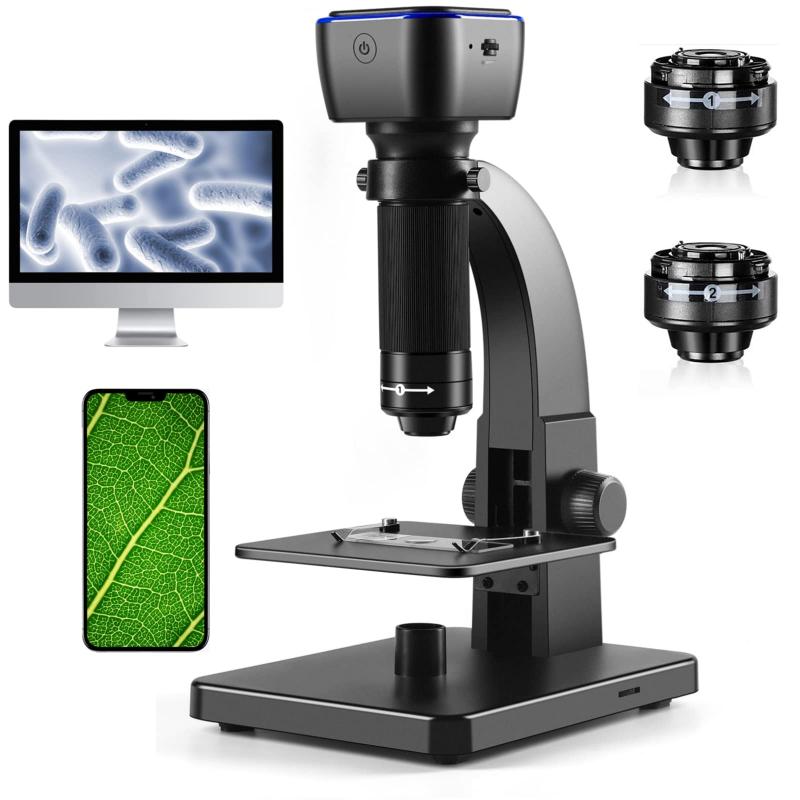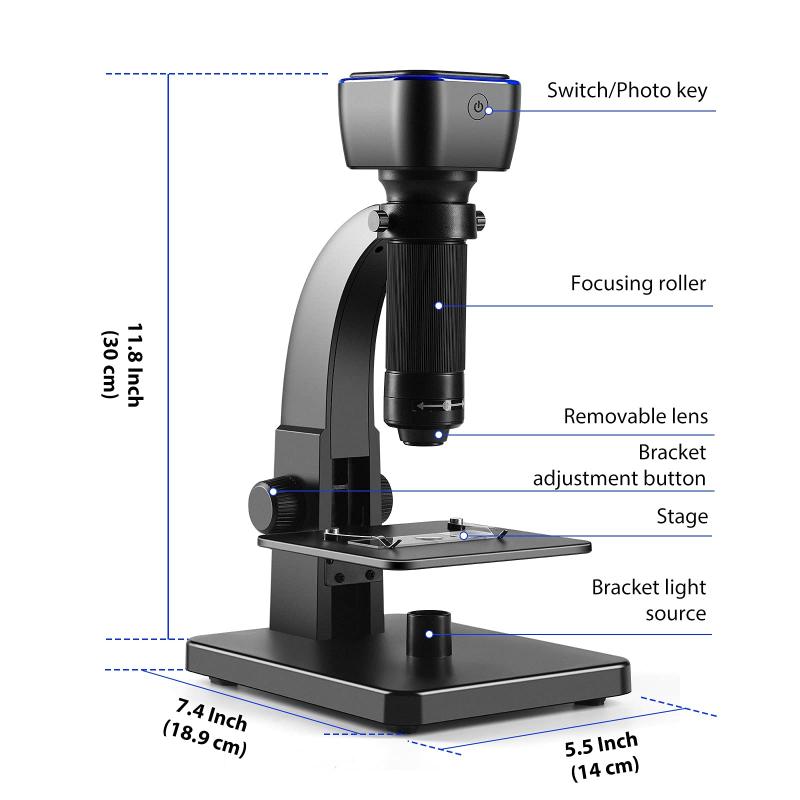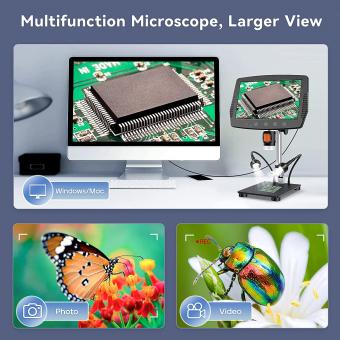Can We See Atoms With Electron Microscope ?
Yes, electron microscopes are capable of imaging atoms. The resolution of an electron microscope is much higher than that of a light microscope, allowing for the visualization of much smaller structures. In fact, the development of electron microscopy in the 20th century revolutionized our understanding of the atomic and molecular world. By using a beam of electrons instead of light, electron microscopes can achieve resolutions of a few picometers, which is small enough to see individual atoms. However, it is important to note that electron microscopy requires specialized equipment and techniques, and the samples being imaged must be prepared in a specific way to avoid damage from the electron beam.
1、 Electron Microscopy
Yes, we can see atoms with an electron microscope. Electron microscopy is a powerful tool that uses a beam of electrons to image the structure of materials at the atomic scale. The resolution of electron microscopy is much higher than that of light microscopy, which is limited by the wavelength of visible light.
In fact, the first direct observation of atoms was made using an electron microscope in 1931 by Max Knoll and Ernst Ruska. Since then, electron microscopy has been used to study a wide range of materials, from biological samples to semiconductors.
The latest point of view on electron microscopy is that it has continued to evolve and improve over the years. Advances in technology have led to the development of new types of electron microscopes, such as scanning transmission electron microscopy (STEM) and aberration-corrected transmission electron microscopy (AC-TEM), which can provide even higher resolution images.
In addition, electron microscopy has become an important tool in materials science, allowing researchers to study the structure and properties of materials at the atomic scale. This has led to the development of new materials with improved properties, such as stronger and lighter metals, more efficient solar cells, and better catalysts for chemical reactions.
Overall, electron microscopy has revolutionized our understanding of the atomic world and continues to be an essential tool in scientific research.

2、 Atomic Resolution Imaging
Yes, we can see atoms with an electron microscope that has atomic resolution imaging capabilities. An electron microscope uses a beam of electrons instead of light to create an image, which allows for much higher magnification and resolution. With atomic resolution imaging, the microscope can detect individual atoms and their positions within a material.
However, it is important to note that while we can see atoms with an electron microscope, we cannot see them directly. Instead, we use the electrons to scatter off the atoms and create a pattern that can be interpreted as an image. This technique is called electron diffraction.
In recent years, advancements in electron microscopy technology have allowed for even higher resolution imaging, with some microscopes capable of imaging individual atoms in real-time. This has opened up new possibilities for studying the properties and behavior of materials at the atomic level.
It is worth noting that while electron microscopy is a powerful tool for imaging atoms, it is not the only method available. Other techniques, such as scanning tunneling microscopy and atomic force microscopy, also allow for atomic-level imaging and analysis.

3、 Scanning Tunneling Microscopy
We can see atoms with both electron microscopes and scanning tunneling microscopy. Electron microscopes use a beam of electrons to create an image of the sample, and they have a resolution of about 0.1 nanometers, which is small enough to see individual atoms. Scanning tunneling microscopy, on the other hand, uses a sharp tip to scan the surface of a sample and measures the flow of electrons between the tip and the sample. This technique can also achieve atomic resolution and has the added advantage of being able to manipulate individual atoms.
However, it is important to note that while we can "see" atoms with these techniques, we are not actually seeing the atoms themselves. Instead, we are seeing the interaction of the electrons in the sample with the electrons in the microscope or tip. This means that the images we obtain are not direct representations of the atoms, but rather a representation of their electron density.
Furthermore, recent developments in electron microscopy have allowed for the visualization of not only the atomic structure but also the chemical composition of materials at the atomic scale. This has opened up new possibilities for understanding the behavior of materials and designing new materials with specific properties.
In conclusion, while we cannot see atoms with the naked eye, we can use advanced microscopy techniques such as electron microscopy and scanning tunneling microscopy to visualize them indirectly. These techniques have revolutionized our understanding of the atomic world and continue to push the boundaries of what we can see and manipulate at the atomic scale.

4、 Transmission Electron Microscopy
Yes, we can see atoms with an electron microscope, specifically with Transmission Electron Microscopy (TEM). TEM uses a beam of electrons to create an image of a sample, and the resolution of this technique is high enough to visualize individual atoms. In fact, TEM has been used to study the structure of materials at the atomic level for decades, and it has been instrumental in advancing our understanding of materials science, nanotechnology, and biology.
However, it is important to note that while TEM can visualize atoms, it does not provide a direct image of the atomic structure. Instead, the electrons interact with the sample and produce a diffraction pattern, which can be used to determine the arrangement of atoms in the material. This technique is known as electron diffraction, and it is a powerful tool for studying the crystal structure of materials.
In recent years, there has been a lot of excitement around the development of new electron microscopy techniques that can provide even higher resolution images of materials. For example, aberration-corrected TEM can correct for distortions in the electron beam, allowing for sharper images and more precise measurements. Additionally, scanning transmission electron microscopy (STEM) can provide atomic-scale images of materials with unprecedented detail.
Overall, electron microscopy, and specifically TEM, has revolutionized our ability to study materials at the atomic level. As technology continues to advance, we can expect even more exciting developments in this field.
































There are no comments for this blog.